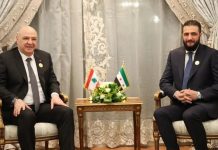
UN report suggests Iran’s satellite tech advancing ballistic missile program
By JPOST.COM STAFF/06/11/2015
The launch of a space satellite by Iran’s military may indicate the Islamic Republic’s possession of ballistic missile technology, a United Nations panels of experts claimed. According to Fox News, the panel, which on June 1 issued its findings on the February 15 launch, claimed that while Tehran official’s “have not been reporting any new ballistic missile developments” or “unveiling or testing of new types of ballistic missiles,” the Islamic Republic intends to deploy three more satellites by March 16 which it hopes to propel “from more powerful launchers and on the back of bigger carriers.”The technology platform used for these experiments is based on a variant of the Shahab-3 ballistic missile, which has a range of 1,000 miles and is considered one of two Iranian missiles that may potentially be able to deliver a nuclear payload. Despite the findings of the panel, the issue of ballistic missile technology has been absent from the tenuous multilateral talks between Iran and the P5+1 nations. The Obama administration did not include any stipulations regarding the powerful delivery system in last November’s interim deal and since then has unfrozen billions of dollars of Iranian assets. While the most recent experiment was only a partial success outwardly, its gains may suggest the possibility of a functional ballistic system.
The satellite, bearing 110 lbs. [49 kg] freight meant for “image collecting” was meant to remain in orbit for 18 months, but plummeted after only 23 days.Despite their apparent aerospace purpose, these experiments are in contradiction to United Nations sanctions resolutions.As part of its sanctions regime pertaining to Iran, the UN forbids Iran from any activities “related to ballistic missiles capable of delivering nuclear weapons, including launches using ballistic missile technology.” In comments from 2014, Iran’s Supreme Leader, Ayatollah Khamenei, denounced any such expectations, calling them “stupid and idiotic,” while urging his country to invest more in its missile development program.
Report: CIA head was in Israel to argue for closure of IAEA nuclear probe of Iran
By YAAKOV LAPPIN/06/11/2015
CIA Director John Brennan likely came to Israel last week to tell Israeli officials that a final nuclear deal with Iran does not have to include a commitment by Tehran to provide access to military bases, or Iranian consent to interview its scientists, a new report by the Middle East Media Research Institute (MEMRI) said. According to the report, written by Ayelet Savyon, director of MEMRI’s Iranian project, and Col. (res.) Yigal Carmon, President of MEMRI, Iranian Supreme Leader Ayatollah Khamenei seems to have torpedoed an arrangement under which IAEA inspectors would be allowed symbolic supervision at Iranian military sites where suspected work has been carried out on military dimensions of the nuclear program.
Khamenei reportedly also rejected proposals that would have enabled Iranian scientists to be questioned by the IAEA. Khamenei’s rejection has led to an impasse in negotiations between the P5+1 countries, according to the report, with European Union states refusing to conclude a deal in the absence of an arrangement that would satisfy the IAEA’s investigation into Possible Military Dimensions (PMD) of Iran’s nuclear program.
“The Iranian retreat from its agreement to allow a symbolic visit in military sites and the questioning of scientists and military personnel, in exchange for closing the Possible Military Dimensions case [in the IAEA] places President Obama in a problematic situation, and the talks at an impasse, since alongside the Iranian rejection, the EU and the IAEA Director-General [Yukiya Amano] refuse to shut the PMD case,” the report said. “Under these circumstances, it seems the head of the CIA, John Brennan, was sent to Israel to convince it – and through it, the European Union – that intelligence monitoring of every suspected instance of a military dimension in the Iranian nuclear program is a sufficient solution, and that the [IAEA’s] PMD investigation can be left aside,” Carmon and Savyon wrote.
According to a Haaretz report, Brennan visited Israel last week and met with senior security officials, including Mossad head Tamir Pardo, the head of Military Intelligence, Maj.-Gen. Herzl Halevi, Prime Minister Benjamin Netanyahu and National Security Adviser Yossi Cohen. Israeli officials refused to comment on the report.
MEMRI cited Iranian media reports that described how Khameni apparently shot down an agreement reached between his own Iranian negotiators and the P5+1 on ways to resolve the IAEA’s investigation, which remains open due to a lack of Iranian cooperation. According to one Iranian report, in order to reach a final agreement by the June 30 deadline, the US has shown willingness to give up on inspections at Iranian military bases and make due only with inspections at declared nuclear sites, while intelligence agencies would handle ongoing monitoring of the Iranian nuclear program. But that proposal has not satisfied the EU or the IAEA. Iran’s refusal to answer the IAEA’s questions, and its ongoing denial of access to inspectors at sites like the Parchin military complex, has left talks at a dead end, the report said.






















